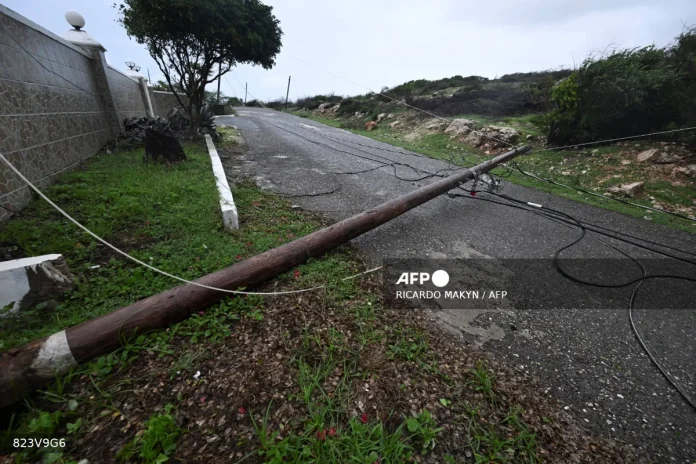KINGSTON: Jamaican officials have urgently advised the public to move to higher ground and shelters before Hurricane Melissa makes landfall on Tuesday.
Prime Minister Andrew Holness warned the Category 5 storm could cause massive devastation across the island.
This potentially record-breaking hurricane has already caused three deaths in Jamaica plus three in Haiti and one in the Dominican Republic.
The US National Hurricane Center reported Melissa was 150 miles from Kingston late Monday with maximum winds of 175 miles per hour.
Its combination of heavy rainfall and intense winds could create destruction comparable to historic hurricanes Maria and Katrina.
Scientists confirm human-driven climate change is making such powerful storms increasingly common in the Caribbean region.
Local Government Minister Desmond McKenzie expressed concern that only 133 of Jamaica’s 880 available shelters were currently housing residents.
He emphasised that people in vulnerable parishes should immediately relocate to higher ground for safety.
Prime Minister Holness specifically warned the island’s western region faces the worst potential destruction from the hurricane.
He stated that no infrastructure in that area could likely withstand a direct hit from a Category 5 storm.
Despite repeated evacuation pleas, many Jamaican residents have chosen to remain in their homes.
Roy Brown from Kingston’s Port Royal area told AFP he would not evacuate because he believes he cannot escape death.
The plumber cited previous negative experiences with government shelter conditions as his reason for staying.
Fisherwoman Jennifer Ramdial similarly expressed her reluctance to leave her home despite the danger.
Prime Minister Holness stressed that evacuation orders serve the national interest of preserving lives.
He reminded citizens they have received adequate warning and must now make responsible decisions.
The hurricane’s unusually slow movement at just three miles per hour increases its destructive potential.
This slow pace means affected areas will endure punishing conditions for extended periods.
The National Hurricane Center predicts catastrophic flash flooding and widespread landslides across the region.
Destructive winds may cause prolonged power outages and extensive damage to infrastructure.
Forecasters expect up to 40 inches of rainfall in Jamaica, Haiti, the Dominican Republic and Cuba.
Jamaica’s southern coast faces a potential 13-foot storm surge with destructive waves.
Residents in St. Elizabeth’s Flagaman community have gathered in a local store for protection.
Store owner Enrico Coke opened his premises because he worried his neighbours had nowhere safe to go.
He expressed particular concern for farmers and fishermen who will suffer greatly after the storm passes.
Coke emphasised that affected communities will need immediate assistance, especially clean water.
The hurricane is expected to cross eastern Cuba after passing over Jamaica.
Tragically, three Jamaicans died while preparing for the storm by cutting tree branches and working on ladders.
Dominican Republic officials reported a 79-year-old man drowned after being swept away in a stream.
A 13-year-old boy remains missing in the Dominican Republic following storm conditions.
Haiti’s civil protection agency confirmed three storm-related deaths occurred over the weekend.
Climate scientist Kerry Emanuel explained that global warming causes more storms to intensify rapidly like Melissa.
He noted that water-related dangers typically claim more lives than hurricane winds.
Jamaica’s last major hurricane was Beryl in July 2024, which was unusually strong for that time of year.
Climate scientist Daniel Gilford stated human-caused climate change is worsening all the most dangerous aspects of Hurricane Melissa. – AFP








